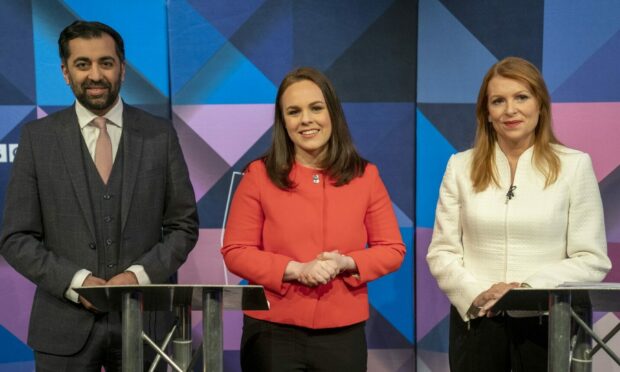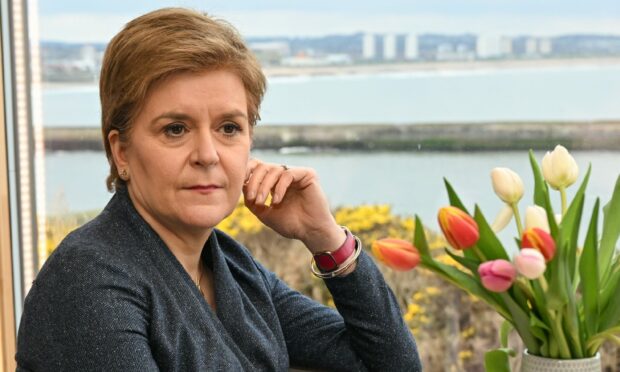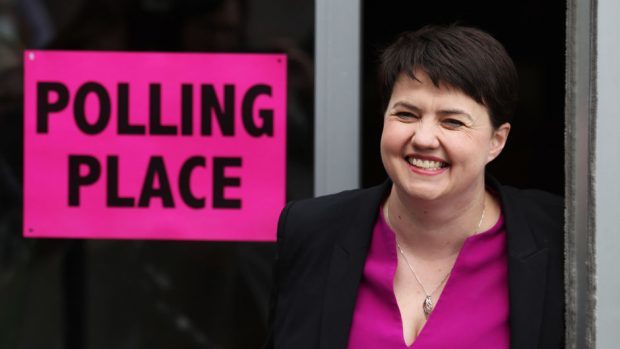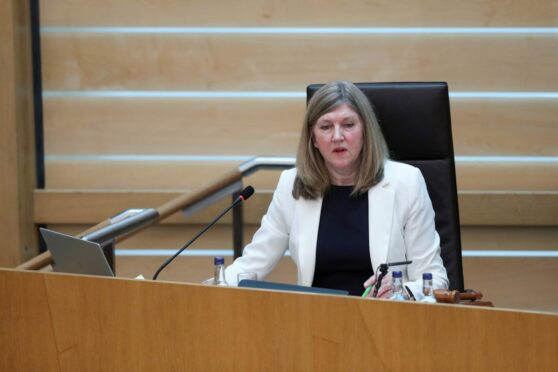Scotland will have a brand new first minister later today.
Ever since Nicola Sturgeon announced her resignation, news coverage has been dominated by who will replace her in the top job.
Humza Yousaf, Kate Forbes and Ash Regan are currently battling it out to become the next leader of the SNP.
But how do we go from having Ms Sturgeon at the helm, to bringing in someone new?
We’ve been taking a look at what people can expect to see happen over the next few days.
When does voting close?
SNP members have been voting for who should become the party’s new leader since March 13.
They have all been sent a digital ballot paper by email or postal vote and will have until midday on Monday, March 27.
When will we know who has won?
The winner will be announced at 2pm at Murrayfield Stadium in Edinburgh.
When does Nicola Sturgeon stop being first minister?
Ms Sturgeon carried out first minister duties right up until the last minute.
She lead her last First Minister’s Questions on Thursday, March 23 and then made a statement to the Scottish Parliament.
This statement was followed by responses from opposition party leaders and other members of parliament.
When she announced her resignation last month, she said she would remain on as both first minister and leader of the SNP until a successor is officially selected.
She will need to officially tender her resignation with the King – from this point on, the parliament has 28 days to appoint her successor.
Does the SNP leader automatically become first minister?
No. According to the parliamentary rule book the first minister doesn’t need to be the leader of the largest party in Scotland.
This means someone from another party could throw their hat in the ring and run against the new SNP leader for the top job.
When Nicola Sturgeon stood to be elected as first minister in 2014, former Scottish Conservative leader Ruth Davidson ran against her, saying she wanted to offer people a pro-union alternative to Ms Sturgeon.
Ms Davidson lost by 15 votes to Ms Sturgeon’s 66.
If this happens again, it is unlikely anyone other than the new SNP leader will win as the SNP have 64 of the 129 seats in Holyrood.
How is the first minister elected?
The official election will take place in Holyrood at 2pm on Tuesday, March 28.
Those wishing to nominate someone needs to submit it in writing, with at least one other person backing them, 30 minutes before the vote takes place.
Each member gets one vote and the vote is valid if more than a quarter of MSPs (33) cast a vote.
If only one or two people are nominated, the winner will need a simple majority to win.
But if there are more than two candidates, someone can win if they get more votes than the total number of votes cast for all the other candidates combined.
If this does not happen, whoever gets the lowest number of votes is eliminated and voting will continue until a winner is picked.
Once there is a winner, Presiding Officer Alison Johnstone will then recommend to the King that person is appointed as first minister.
On Wednesday the new first minister will also go to the Court of Session as part of the official proceedings.
What if no one can agree?
In the unlikely event an agreement cannot be reached, the presiding officer would propose a date for holding an extraordinary general election under the rules of the Scotland Act 1998.
What next for the new first minister?
After the election takes place, the new first minister will appoint their cabinet, including handing out ministerial and junior minister roles.
This is currently scheduled to take place at 2.30pm on Tuesday, March 28.
The first big diary event for the new first minister will be first minister’s questions at 12pm on Thursday, March 30.




Conversation